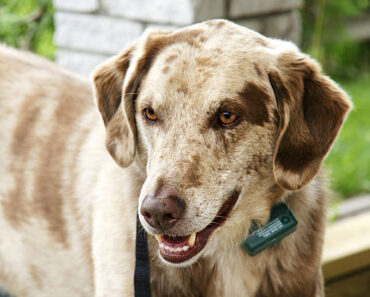Dogs, like humans, are susceptible to diabetes. There are several types of diabetes, which can be divided into type I and type II.

The different types of diabetes
Type I appears at a relatively young age of the animal, and results in a lack of insulin. Insulin is a hormone, produced by the pancreas, which allows glucose (sugar) to enter the cells, which use it as an energy source. This hormone therefore plays a role in the regulation of glucose. Type I diabetes, due to a lack of insulin, is to be taken very seriously: glucose is not as well regulated as it should be, causing hyperglycemia, i.e. too much glucose circulating freely in the blood.
The most common type of diabetes is type II diabetes, which is also hyperglycemia. But there is no insulin defect this time; the hormone is produced in so-called “normal” quantities, but has a defect that causes it to function less well. Here too, glucose is not well regulated and is present in the blood in too high a dose. This type of diabetes usually occurs later, and is due to genetic but also environmental factors. For example, an overweight animal that does little exercise or has a poorly adapted diet is more likely to develop type II diabetes.
What are the symptoms?
The consequences or rather the symptoms of the disease are an over-expression of the means of regulation of glucose. The latter was not well enough regulated by insulin, the animal’s body sets up other means to eliminate the excessive amount of sugar present in the blood, which can be toxic in the long term.
Your dog will most likely start drinking heavily; the body demands large amounts of water in an attempt to lower the glucose concentration. Glucose will also show up in the urine. The urine will be rich in sugar and will appear “sticky”. Other manifestations may appear, such as cataracts or urinary infections.
If these types of problems appear, it does not necessarily mean that your pet is diabetic, but it is possible to do additional tests. Most often, this involves blood and urine tests to measure possible hyperglycemia via the concentration of glucose in the blood. Sometimes an abdominal ultrasound may be ordered to assess the condition of the pancreas, the organ that produces insulin.
How is diabetes treated?
In most cases, a dog with diabetes mellitus is treated with insulin injections. Other solutions can help improve the health and management of the disease, including increased exercise if your pet is overweight or obese. A proper diet is also essential; nutrient intake, mainly carbohydrates, must be controlled so that the animal loses weight, but not too quickly. Specially designed kibbles are available for medical purposes to ensure that your pet’s health is improved.






